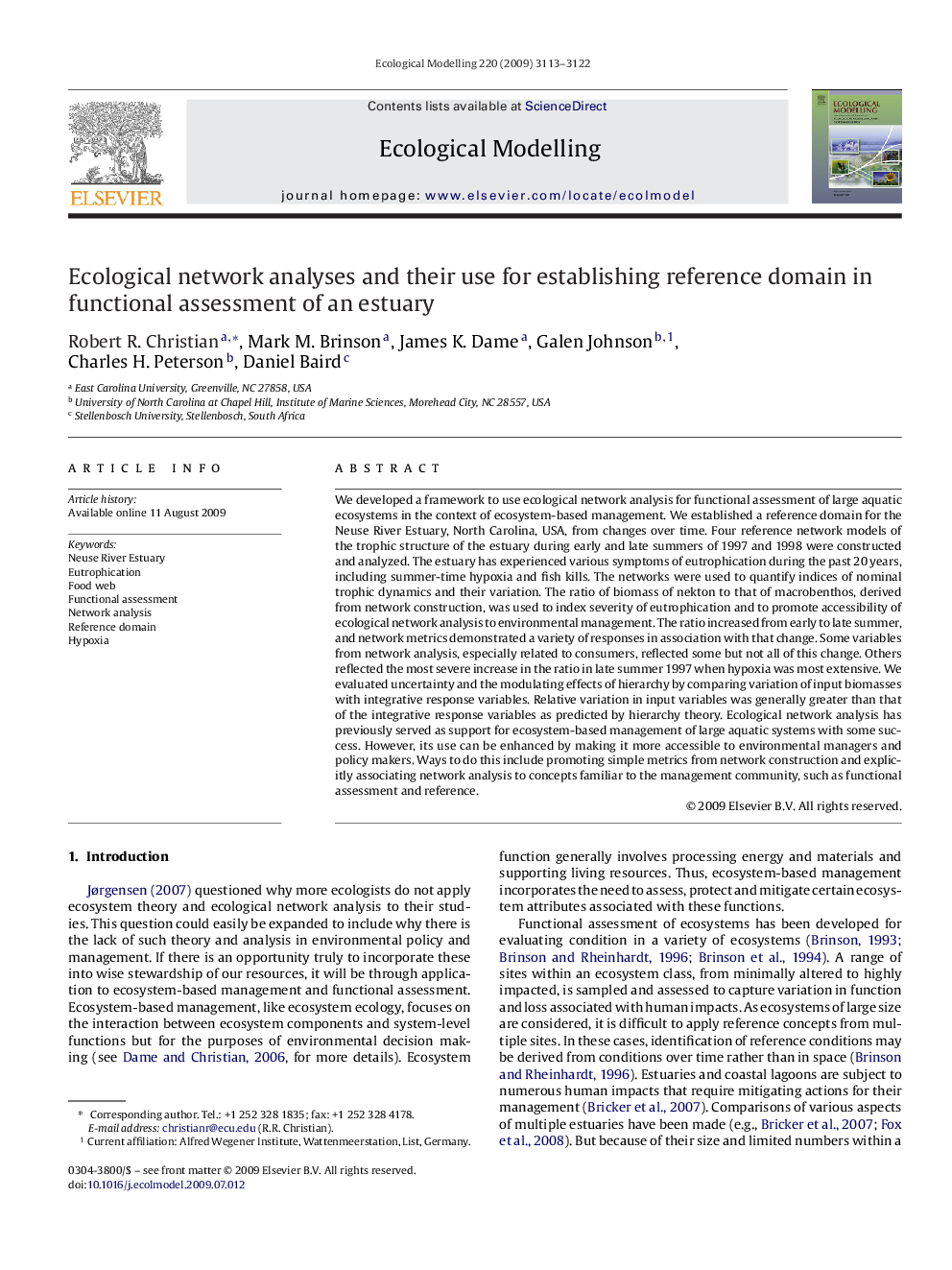| Article ID | Journal | Published Year | Pages | File Type |
|---|---|---|---|---|
| 4377526 | Ecological Modelling | 2009 | 10 Pages |
We developed a framework to use ecological network analysis for functional assessment of large aquatic ecosystems in the context of ecosystem-based management. We established a reference domain for the Neuse River Estuary, North Carolina, USA, from changes over time. Four reference network models of the trophic structure of the estuary during early and late summers of 1997 and 1998 were constructed and analyzed. The estuary has experienced various symptoms of eutrophication during the past 20 years, including summer-time hypoxia and fish kills. The networks were used to quantify indices of nominal trophic dynamics and their variation. The ratio of biomass of nekton to that of macrobenthos, derived from network construction, was used to index severity of eutrophication and to promote accessibility of ecological network analysis to environmental management. The ratio increased from early to late summer, and network metrics demonstrated a variety of responses in association with that change. Some variables from network analysis, especially related to consumers, reflected some but not all of this change. Others reflected the most severe increase in the ratio in late summer 1997 when hypoxia was most extensive. We evaluated uncertainty and the modulating effects of hierarchy by comparing variation of input biomasses with integrative response variables. Relative variation in input variables was generally greater than that of the integrative response variables as predicted by hierarchy theory. Ecological network analysis has previously served as support for ecosystem-based management of large aquatic systems with some success. However, its use can be enhanced by making it more accessible to environmental managers and policy makers. Ways to do this include promoting simple metrics from network construction and explicitly associating network analysis to concepts familiar to the management community, such as functional assessment and reference.
